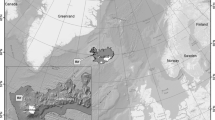Abstract
Accurate phenology data, such as the timing of migration and reproduction, is important for understanding how climate change influences birds. Given contradictory findings among localized studies regarding mismatches in timing of reproduction and peak food supply, broader-scale information is needed to understand how whole species respond to environmental change. Citizen science—participation of the public in genuine research—increases the geographic scale of research. Recent studies, however, showed weekend bias in reported first-arrival dates for migratory songbirds in databases created by citizen-science projects. I investigated whether weekend bias existed for clutch-initiation dates for common species in US citizen-science projects. Participants visited nests on Saturdays more frequently than other days. When participants visited nests during the laying stage, biased timing of visits did not translate into bias in estimated clutch-initiation dates, based on back-dating with the assumption of one egg laid per day. Participants, however, only visited nests during the laying stage for 25 % of attempts of cup-nesting species and 58 % of attempts in nest boxes. In some years, in lieu of visit data, participants provided their own estimates of clutch-initiation dates and were asked “did you visit the nest during the laying period?” Those participants who answered the question provided estimates of clutch-initiation dates with no day-of-week bias, irrespective of their answer. Those who did not answer the question were more likely to estimate clutch initiation on a Saturday. Data from citizen-science projects are useful in phenological studies when temporal biases can be checked and corrected through protocols and/or analytical methods.


Similar content being viewed by others
References
Both C, Bouwhuis S, Lessells CM, Visser ME (2006) Climate change and population declines in a long-distance migratory bird. Nature 441:81–83
Both C, van Asch M, Bijlsma RG et al (2009) Climate change and unequal phonological changes across four trophic levels: constraints or adaptations? J Anim Ecol 78:73–83
Bonney R, Cooper CB, Dickinson J, Kelling S, Phillips T, Rosenberg KV, Shirk J (2009) Citizen Science: a developing tool for expanding science knowledge and scientific literacy. Bioscience 59:977–984. doi:10.1525/bio.2009.59.11.9
Bonter DN, Cooper CB (2012) A process for improving data quality and a strategy for ensuring sustainability in a citizen science project. Front Ecol Envir 10:305–307
Boudreau S, Yan N (2004) Auditing the accuracy of a volunteer-based surveillance program for an aquatic invaderBythotrephes. Environ Monit Assess 91:17–26
Cooper CB, Hochachka WM, Dhondt AA (2012) The opportunities and challenges of Citizen Science as a tool for ecological research. In: Dickinson JL, Bonney R (eds) Citizen science: public collaboration in environmental research. Cornell University Press, Ithaca, pp 99–113
Courter JR, Johnson RJ, Stuyck CM, Lang BA, Kaiser EW (2012) Weekend bias in Citizen Science data reporting: implications for phenology studies. Intl J Biometeor 57:715–720. doi:10.1007/s00484-012-0598-7
Dunn PO, Winkler D (1999) Climate change has affected the breeding date of tree swallows throughout North America. Proc R Soc Lond B 266:2487–2490
Foster-Smith J, Evans SM (2003) The value of marine ecological data collected by volunteers. Biol Conserv 113:199–213
Genet KS, Sargent LG (2003) Evaluation of methods and data quality from a volunteer-based amphibian call survey. Wildl Soc Bull 31:703–714
Glick P, Stein BA, Edelson NA (2011) Scanning the conservation horizon: a guide to climate change vulnerability assessment. Natl Wildl Fed, Washington
Gwinner E (2003) Circannual rhythms in birds. Curr Opin Neurobiol 13:770–778
Haggerty BP, Matthews ER, Gerst KL, Evenden AG, Mazer SJ (2013) The California Phenology Project: tracking plant responses to climate change. BioOne Madroño 60:1–3. doi:10.3120/0024-9637-60.1.1
Martin TE (1995) Avian life history evolution in relation to nest sites, nest predation, and food. Ecol Mono 65:101–127
Parmesan C, Yohe G (2003) A globally coherent fingerprint of climate change impacts across natural systems. Nature 421:37–42. doi:10.1038/nature01286
Pipino LL, Lee YW, Wang RY (2002) Data quality assessment. Commun ACM 45:211–218
Schwartz MD (2003) Phenology: an integrative environmental science. Springer, Dordrecht
Silvertown J (2009) A new dawn for Citizen Science. Trends Ecol Evol 24:467–471
Sparks T, Huber K, Tryjanowski P (2008) Something for the weekend? Examining the bias in avian phenological recording. Int J Biometerol 52:505–510. doi:10.1007/s00484-008-0146-7
Visser ME, van Noordwijk AJ, Tinbergen JM, Lessells CM (1998) Warmer springs lead to mistimed reproduction in great tits (Parus major). Proc Roy Soc Lond B 265:1867–1870
Wand Y, Wang RY (1996) Anchoring data quality dimensions in ontological foundations. Commun ACM 39:86–95
Wang RY, Strong DM (1996) Beyond accuracy: what data quality means to data consumers. J Manage Inf Syst 12(4):5–33
Wiggins A (2011) eBirding: technology adoption and the transformation of leisure into science. iConference, Seattle
Acknowledgments
I am grateful to the current and past participants in NestWatch, The Birdhouse Network, and Historic NestWatch for sharing their observations of nesting birds. I am thankful to W. Hochachka and A. Dhondt for comments that improved this manuscript.
Author information
Authors and Affiliations
Corresponding author
Rights and permissions
About this article
Cite this article
Cooper, C.B. Is there a weekend bias in clutch-initiation dates from citizen science? Implications for studies of avian breeding phenology. Int J Biometeorol 58, 1415–1419 (2014). https://doi.org/10.1007/s00484-013-0742-z
Received:
Revised:
Accepted:
Published:
Issue Date:
DOI: https://doi.org/10.1007/s00484-013-0742-z




